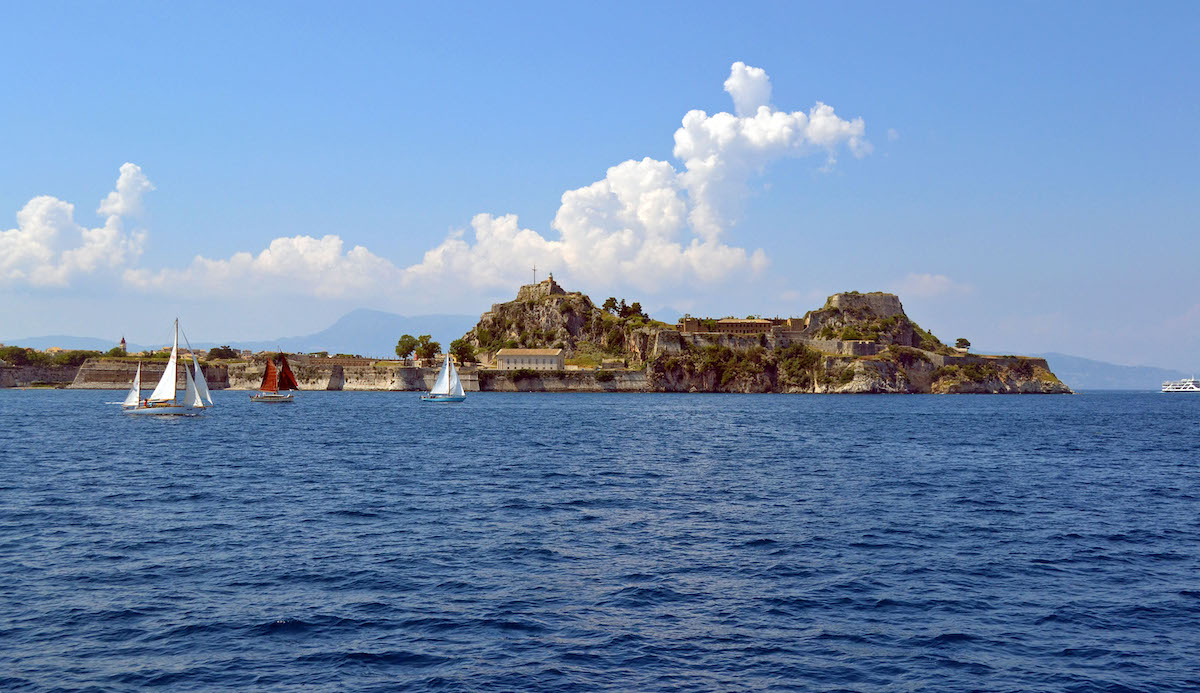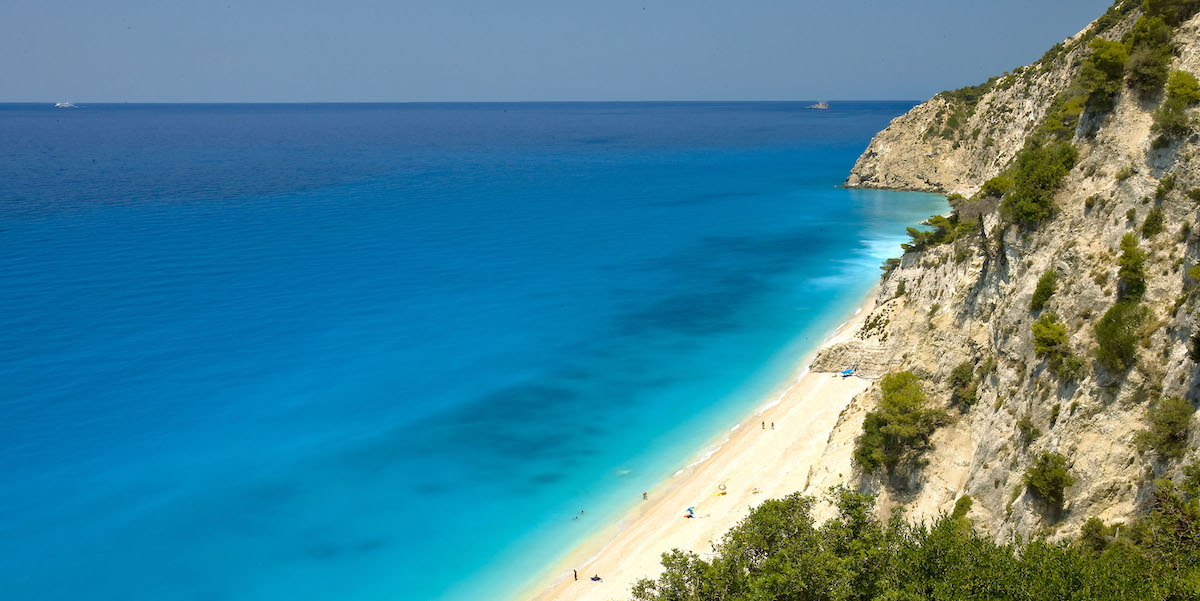The Ionian Islands of Greece are distinctly greener, calmer and more historically diverse than those in the Aegean Sea. Santorini and Mykonos have almost become giant hotel resorts in and of themselves – swamped by cruise ships and stag dos. They’re still beautiful destinations but overrun by the masses.
Moving northwards, you find fewer and fewer people rubbing shoulders on the beaches and in the main towns. It’s far from being an empty oasis but it’s much easier to find your own private beach for the day.
And, because of the slightly cooler climate, these spots are full of flourish nature – a refreshing change from the rocky and dry alternatives in the Aegean. The water up these ways is also known for being far less choppy, making ideal for yacht lovers who don’t want an overly challenging week-long sail. Basically, forget the classic Greek islands. Set your sights on the Ionian Sea instead.
Corfu
A part of the northern most region of the Ionian, Corfu represents all the best bits of the area. The west coast is known for its more dramatic scenery with tall tree-covered mountains diving right down into the sea, offering a few empty coves for swimming.

It’s a little harder to explore but worth the little adventure. And more interesting than all the resort areas down at the bottom of Corfu. Corfu Town is an ideal hub for the island too. Its Parisian-style arcades and Venetian alleyways make for the best kinds of aimless wandering while the two old forts which sandwich the old town make for impressive views and history lessons.
But, if you’re searching for quiet sandy beaches, you’ll have to go far out of Corfu town – which is easy enough with a little car or quad bike. Or jump on a ferry to some of the nearby islands a little further south.
Paxos & Antipaxos
These sister islands are chock full of yachts in the peak August period. It makes for a stunning scene as you see them hike up their sails around the coast and make way for hidden coves. But they do tend to swamp the most famous beaches.
They’re still easy enough to avoid. You can hire your own yacht and skipper for a surprisingly affordable price around these parts so do look into such an option. This way you can find your own personal beach for the day – free of party cruises and superyachts.
Lakka is our favourite town on Paxos but we couldn’t help but fall for Mongonissi (mostly because it is just such a tiny harbour village). Gaios, however, did get a little too busy and felt a tad touristy. Pass by it if you can. Antipaxos, on the other hand, isn’t quite made for staying the night on. Most people just jut over early in the morning for swimming. We recommend you do the same.
Lefkada
Lefkada has gotten increasingly popular over the past few years. Much of this is thanks to the spectacular beaches you find here. Forget the pebbles – sandy shores await you here. But, thanks to the size of Lefkada, it still doesn’t feel that busy. Lefkada Town is charming sleepy area which is a good base to use when seeking out different parts.

Most come for the swimming spots, but the mountainous interior has got to be on your list too. Up here, you’ll come across untouched local villages surrounded by ancient olive groves and bursting with delicious cuisine – not just the usual Greek salad.
Then head to the south of the island, away from all the luxury resorts, to find stunning little bays and inlets, as well as windy conditions that attract kitesurfers and windsurfers from all over the world. For those wanting to be a little more active, get on a course around here. But again, sailing around these parts is super accessible. It’s how this part of Europe should be experienced.
Lead image by G Filippini.







